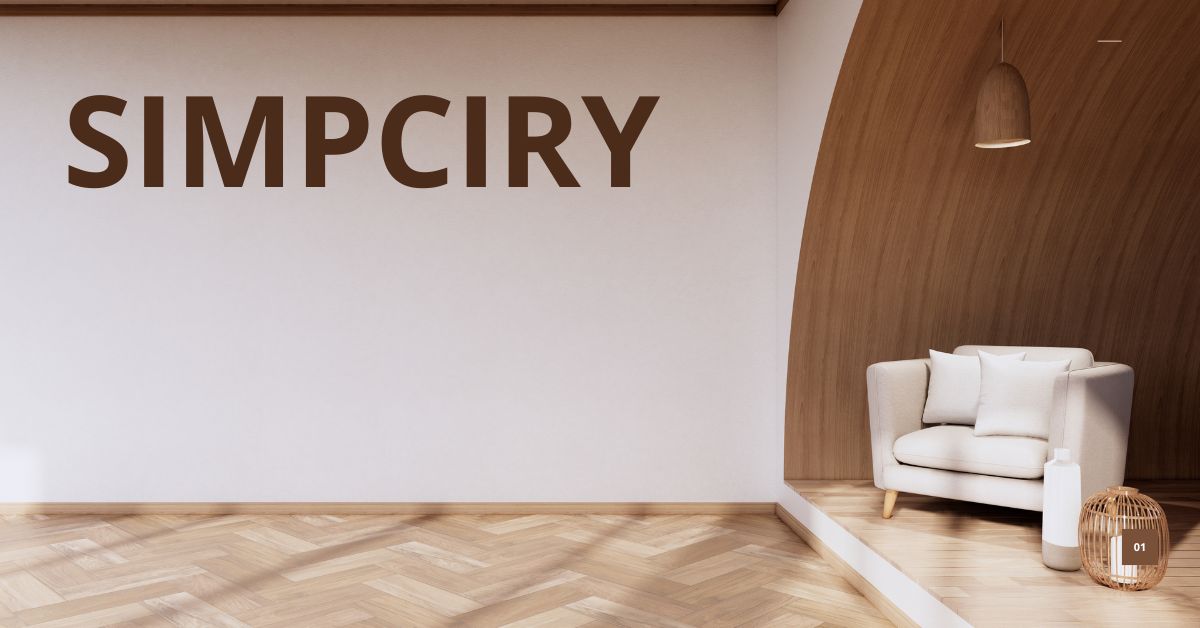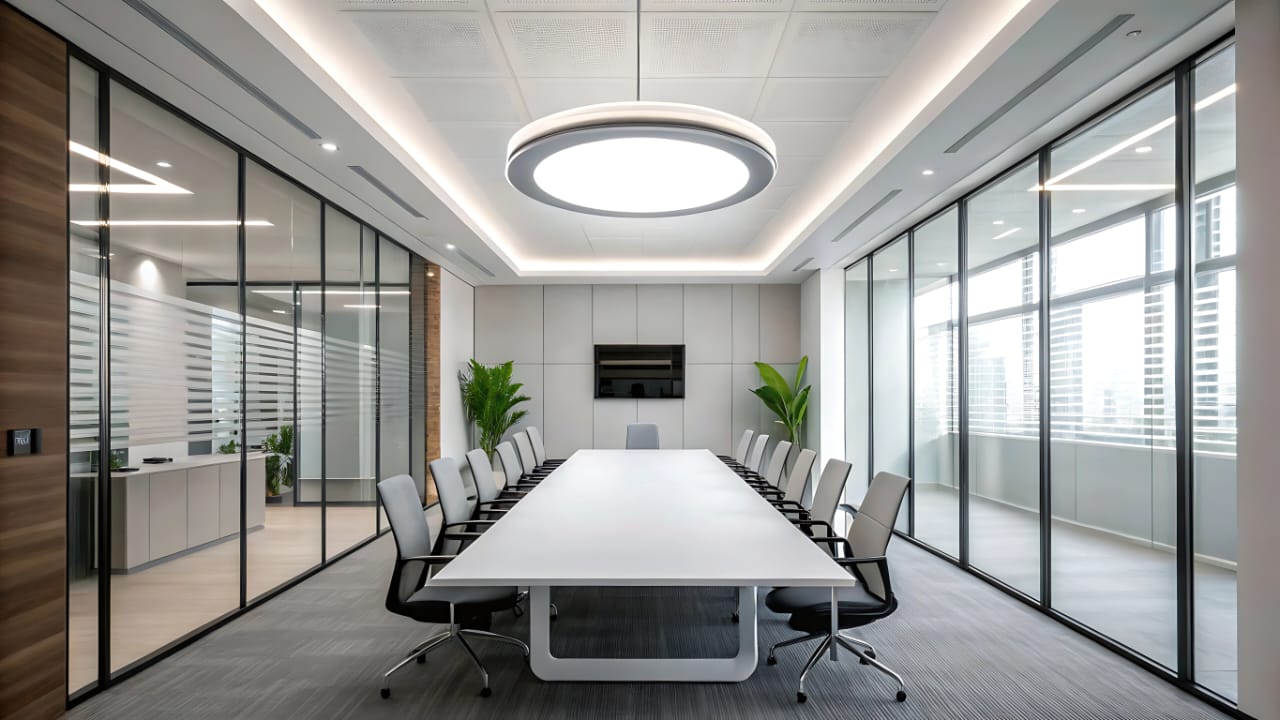Home Design
Plumber in Geelong: 4 Times You Need Plumbing for a New House

Congratulations on buying a new residential land. Before you begin to call a builder for laying the foundations, you must ensure adequate plumbing systems in your new house.
Because plumbing installation is the first process that further helps in designing a home. And to prevent spending more on plumbing installations later, you must realise this key point.
In this blog, you will learn different stages of a home construction that needs a reliable plumber in Geelong. You will discover the role of a plumber in each of the planning, underground plumbing, rough-in plumbing, and fixture installation stages. So, to ensure your home has necessary elements that match with the layout, continue reading the blog till the end.
Different Stages That Require a Plumber Involvement
Let’s discover the right time to call a plumber during each stage of the new house construction.
-
During the Planning Stage:
You must call a plumber during the planning stage of the house construction. During this phase, a builder plans the structure of your house. He will determine the total area in which your house will be built. Plus, he will discuss the number of rooms, bathrooms, living area, and outdoor area with you. There will also be calculations on the area of each room.
During this planning, calling a plumber in Geelong is the right to design a house integrating all the essential plumbing elements. Here is how:
- A plumber will collaborate with the builders to discuss which and where the plumbing is required in the design maps.
- Plumbers inspect the site and mark the main water supply lines, drainage systems, and gas lines for underground installation.
- A handyman locates the toilets, sinks, and dishwashers in the kitchen and bathroom designs.
As you begin your search for a plumber, it is important to find a licensed professional who complies with the local building and plumbing regulations. Look for a team of licensed professionals who adhere to renowned organisations like Victorian Building Authority, Energy Safe Australia, and Master Plumbers.
-
At the Time of Underground Plumbing:
Right after planning the house design is the process of digging the ground. As soon as your builder digs the underground holes, you must call in the plumber in Geelong to put in the underground utilities. This includes sewer, drainage, and water supply lines. Here is how the process follows.
- Installing a secure sewer line to connect it with the city’s main sewage system.
- Building underground drainage systems for connection with roof’s downpipes and gutters.
- Installing main water supply lines to access safe and clean water for future fixtures.
- Securing the necessary gas pipes to accommodate gas water heaters or stoves.
Search for a reliable plumbing service that carries out all the underground utilities in an efficient and safe manner.
-
During Rough-in Plumbing:
This is the time when a builder completes house framing. During this time, you will need a plumber to install pipes and connections to the subfloors. Here is a list of essential plumbing systems at this stage.
- Hot and cold water supply lines throughout the house.
- Drain lines for toilets, kitchen sinks, showers, and other fixtures.
- Vent pipes for drainage.
- Gas lines in the right locations to connect through the main gas supply line.
- Hot water systems, including solar water heaters, water tanks, or rainwater recycling systems.
Calling a plumber in Geelong during the rough-in plumbing stage brings you the assurance that the pipelines are safe, leak-free, and will not disrupt other essential work later. If necessary, you can schedule an inspection with a plumber before installing the fixtures.
-
During the Time of Fixture Installation:
When everything is in order, the last stage to call a plumber is when installing the necessary fixtures. A reliable plumber performs the following tasks.
- Sink, toilet, or bathtub installation.
- Faucet, showerhead, and other fixture connections.
- Dishwasher, washing machine, gas water heater, and boiler installations.
- Gas appliance connections.
It is best to work with a good and reliable plumber in Geelong to equip your house with secure, efficient, and ready to use fixtures.
Common Mistakes to Avoid
While plumbing a new house at each of the above stages is an efficient strategy, you must not overlook these common mistakes.
-
Ignoring Water Pressure:
Low or high water pressure is a sign of poor plumbing systems. Your plumber must take measures like installing a water pressure regulator alongside the fixtures.
Not to forget, installing inadequate pipe size or using low quality fixtures also results in poor water flow. It is best to work with a professional plumber who understands the ideal water pressure level and assists in good maintenance.
-
Poor Drainage Planning:
If a plumber fails to plan the drainage slope, it stops or slows the water flow and even blocks the plumbing line. This is a common problem that most of the plumbers fail to address.
It is your responsibility to call an efficient plumber in Geelong who positions the pipe at right angle downward for a smooth water flow.
-
Overlooking Future Expansion:
It is quite natural to forget planning for the extra bathroom, outdoor kitchen, or sink. This can later lead to major renovations which is a pretty expensive project. It is best to consider capped-off water or additional drain lines for future changes.
Final Words
We hope you found this blog useful. As you see, involving an efficient and smart plumber in Geelong who can carry all the essential plumbing systems before, during, and after the house construction is the need of the hour.
Apart from securing your house with necessary pipelines and fixtures, a proficient and reliable plumber communicates with the builder during the layout, lays the underground pipeline, installs the multiple framing pipeline, and connects the fixtures for a safe living.
Take the next step —- consider Your Local Plumbing, a company specialising in all kinds of plumbing work in Geelong. With a decade of experience in plumbing, their licensed and highly-rated team will surely live up to your expectations.
ALSO READ: The Benefits of Using Composite Cladding for Australian Homes
Home Design
The Power of Simpciry: Mastering the Art of a Minimal Life

Simpciry, though an uncommon term, resonates deeply with the concept of simplicity. It embodies a lifestyle centered around minimalism, balance, and mindfulness. In a world driven by chaos, speed, and consumerism, simpciry is a call to return to what truly matters. It encourages us to declutter not only our physical surroundings but also our minds, relationships, and priorities.
The Modern Struggle With Complexity
Our daily lives are filled with distractions—notifications, advertisements, endless choices, and digital overload. We often equate busyness with success, yet this constant chase leaves us drained and unfocused. Simpciry challenges this notion by emphasizing that true success lies in clarity, not clutter. It helps us distinguish between what is essential and what is merely noise.
Living With Intention
At the heart of simpciry lies intention. Every action, decision, and thought should have a clear purpose. Living intentionally means being aware of why you do what you do—whether it’s buying something, choosing a career, or maintaining relationships. When we apply intention, we gain control over our lives and eliminate the unnecessary.
Decluttering Your Space
One of the easiest ways to practice simpciry is by decluttering your environment. A clean, organized space fosters calmness and productivity. When we remove excess items, we also remove emotional baggage tied to them. Start with small steps—clear one drawer, one closet, or one shelf. As you continue, you’ll feel lighter and more focused.
The Mental Impact of Simpciry
Mental clutter can be more exhausting than physical clutter. Overthinking, multitasking, and information overload contribute to anxiety. Practicing simpciry in your thoughts means prioritizing peace over chaos. Focus on one task at a time, meditate regularly, and disconnect from constant digital stimulation. Your mind, like your home, deserves space to breathe.
Financial Simpciry and Freedom
Money plays a major role in our sense of security, but it also becomes a source of stress when mismanaged. Simpciry promotes mindful spending—buying what you need, saving for the future, and avoiding unnecessary debt. Financial simpciry allows you to live freely without the pressure of keeping up with unrealistic lifestyles. It’s not about being cheap; it’s about being conscious.
Embracing Minimalism in Relationships
Relationships often suffer when cluttered with drama, expectations, and pretense. Practicing simpciry in relationships means surrounding yourself with people who genuinely uplift and inspire you. Focus on quality over quantity. Honest communication, mutual respect, and emotional understanding create stronger, simpler bonds.
Digital Simpciry for a Balanced Life
In the digital era, our devices dominate our time. Simpciry urges us to manage our digital habits. Unsubscribe from unnecessary emails, unfollow toxic accounts, and schedule screen-free hours. Limit your social media to what adds value. The goal is to regain control over your attention and use technology as a tool, not a trap.
Work Simpciry and Productivity
Simplicity in work doesn’t mean doing less—it means doing better. Avoid multitasking and focus on high-priority tasks. Create clear daily goals and eliminate distractions. A simple workflow reduces burnout and enhances creativity. When your workspace and schedule are streamlined, you perform with greater clarity and purpose.
Health Through Simpciry
Your health thrives on simplicity. Eat clean, exercise regularly, and rest adequately. You don’t need complex diet plans or expensive gym memberships to stay fit. Simpciry encourages listening to your body, choosing wholesome foods, and enjoying nature’s rhythms. When you strip health routines of unnecessary complexity, they become sustainable.
The Spiritual Dimension of Simpciry
Simpciry extends beyond the physical and mental—it touches the spiritual realm. It’s about connecting with yourself and the world around you. Meditation, prayer, or simply spending time in nature deepens self-awareness. Spiritual simpciry invites peace and gratitude into everyday life, reminding us that fulfillment often lies in the smallest moments.
Sustainability and Simpciry
Living simply contributes to a sustainable planet. Reducing consumption, reusing materials, and supporting eco-friendly practices protect our environment. Simpciry isn’t only personal—it’s ethical. Every small conscious choice, like reducing waste or conserving water, becomes an act of responsibility toward future generations.
Finding Joy in the Little Things
Simpciry reveals that happiness isn’t found in abundance but in appreciation. A morning walk, a meaningful conversation, or a quiet cup of tea can bring immense joy. By slowing down, you become more present and aware of life’s subtle beauty. Gratitude transforms ordinary experiences into extraordinary blessings.
Building a Routine of Simpciry
Consistency is key to maintaining a simple lifestyle. Create routines that reflect your values—morning mindfulness, organized work hours, and restful evenings. Avoid overcommitting and say no when necessary. Structure brings stability, allowing simplicity to flow naturally throughout your day.
The Emotional Liberation of Letting Go
Letting go is one of the most powerful aspects of simpciry. Whether it’s releasing toxic people, unhelpful habits, or past regrets, detachment frees your emotional space. Holding onto the past prevents growth, while simplicity encourages renewal. When you let go, you make room for peace, progress, and purpose.
Simpciry and Creativity
Creativity flourishes in simplicity. A cluttered environment stifles inspiration, while minimalism nurtures imagination. Many great thinkers and artists thrived in simple spaces because they could focus fully on their craft. When you eliminate distractions, creativity finds room to breathe.
The Global Movement Toward Simpciry
Across the world, people are recognizing the value of simple living. Movements like minimalism, slow living, and sustainable consumption echo the principles of simpciry. As society becomes more aware of mental health and environmental concerns, simplicity is evolving from a trend to a necessity.
Challenges in Adopting Simpciry
Embracing simpciry isn’t always easy. Society glorifies consumption, speed, and excess. Simplifying your life requires courage to go against the norm. The key is persistence—small changes over time lead to profound transformation. With patience, simpciry becomes second nature.
Simpciry as a Lifelong Journey
Simpciry isn’t a destination—it’s a journey. There will always be moments of imbalance, but each step toward simplicity brings more peace and clarity. Like a garden, it requires continuous care. The reward is a life filled with meaning, focus, and authenticity.
Conclusion
Simpciry teaches us that life’s greatest treasures lie not in possessions or complexity, but in mindfulness, presence, and purpose. When we simplify, we amplify what truly matters—peace, health, love, and happiness. By embracing simpciry, we reconnect with the essence of being human: living with grace and gratitude.
FAQs
- What is the main idea behind simpciry?
Simpciry is about simplifying every aspect of life—physical, mental, and emotional—to achieve clarity, peace, and purpose. - How can I start living simply?
Begin with small steps: declutter your home, reduce screen time, and prioritize what truly matters to you. - Is simpciry the same as minimalism?
They share similar principles, but simpciry focuses more on mindfulness and emotional balance than on owning fewer items. - Can simpciry help reduce stress?
Absolutely. Simplifying your environment, schedule, and thoughts reduces overwhelm and promotes calmness. - Why is simpciry important today?
In our fast-paced, consumer-driven world, simpciry helps us slow down, live consciously, and find real happiness.
Home Design
Pyntekvister: A Complete Guide to Decorative Branches

Pyntekvister, a Scandinavian term translating to decorative branches, has become a popular element in interior design and seasonal decoration. These branches are not only natural and eco-friendly but also versatile enough to complement both traditional and modern aesthetics. Their rustic charm makes them suitable for holidays, events, and daily home styling.
The Origin of Pyntekvister
The tradition of pyntekvister is deeply rooted in Nordic culture, where nature plays a central role in home decoration. Scandinavians often brought branches indoors to brighten up long winters, symbolizing life, renewal, and connection to nature. Over time, these decorative branches evolved from simple natural pieces into artistic and customized décor items.
Types of Pyntekvister
Pyntekvister can be made from different types of branches depending on availability and style preference. Popular choices include willow, birch, cherry blossom, eucalyptus, and pine. Each type brings its own charm; for example, willow twigs give a whimsical feel, while eucalyptus offers a soothing fragrance along with visual beauty.
Why Pyntekvister Are Popular
The popularity of pyntekvister stems from their simplicity and adaptability. Unlike artificial decorations, they bring a piece of nature indoors, creating a calming and organic atmosphere. They can be left plain for minimalists or enhanced with ornaments, lights, or ribbons for festive occasions.
Pyntekvister in Seasonal Decorations
During Christmas, pyntekvister are often decorated with baubles, stars, or fairy lights to create a cozy and festive look. In spring, branches with budding flowers symbolize renewal and growth, while autumn branches highlight earthy tones that fit harvest celebrations. Their ability to fit every season makes them a timeless decorative choice.
Using Pyntekvister for Weddings
Weddings are a perfect occasion for pyntekvister. They can be arranged as centerpieces, used to decorate arches, or placed along aisles for a rustic and natural theme. When paired with flowers, candles, or hanging ornaments, pyntekvister add elegance without overwhelming the space.
DIY Pyntekvister Projects
Creating your own pyntekvister is a rewarding DIY project. Collect branches from nearby trees or buy them from craft stores. Clean and trim them to the desired size, then paint, glitter, or wrap them with lights for a personalized touch. DIY pyntekvister are cost-effective and allow you to unleash your creativity.
Painting and Coloring Pyntekvister
For a modern twist, pyntekvister can be painted in metallic shades like gold, silver, or copper. White-painted branches fit perfectly in minimal Scandinavian interiors, while bright colors can be used for children’s parties or themed events. Spray paints are often preferred as they coat branches evenly and quickly.
Pyntekvister with Fairy Lights
Adding fairy lights to pyntekvister transforms them into magical displays. Whether used in living rooms, bedrooms, or outdoor patios, the soft glow creates a warm and inviting atmosphere. Battery-operated lights are especially practical as they avoid messy cables.
Minimalist Pyntekvister Arrangements
For minimalists, simple arrangements of plain branches in glass vases bring elegance without extra embellishments. The bare structure of the branches emphasizes natural beauty and highlights the clean lines typical of Scandinavian design. Minimalist pyntekvister prove that less can indeed be more.
Eco-Friendly and Sustainable Decoration
One of the strongest appeals of pyntekvister is their sustainability. Using natural branches reduces the need for plastic decorations, making them eco-conscious choices. After use, they can be composted or reused for other creative projects, ensuring zero waste.
Styling Pyntekvister in Homes
In home interiors, pyntekvister can be placed in entryways, dining tables, living rooms, or even bathrooms to add a natural touch. Tall branches in floor vases make bold statements, while smaller clusters work well on shelves or coffee tables. Their adaptability allows endless styling options.
Pyntekvister for Outdoor Spaces
Outdoor areas also benefit from pyntek’vister. Branches can be arranged in garden pots, hung from pergolas, or used to line pathways for events. When paired with lanterns, flowers, or fabric, they enhance outdoor gatherings with rustic charm.
Pyntekvister in Scandinavian Design
Scandinavian design emphasizes simplicity, functionality, and natural elements. Pyntekvister fit seamlessly into this style as they embody all three principles. They blend with neutral palettes, wooden furniture, and cozy textiles to create balanced and inviting spaces.
Caring for Pyntekvister
Although branches are durable, caring for them ensures they last longer. Keeping them away from excessive moisture prevents mold, while applying varnish or sealant preserves painted branches. Dried flowers or preserved leaves can also be added to enhance longevity.
Commercial Uses of Pyntekvister
Businesses such as restaurants, cafes, and boutiques increasingly use pyntekvister for decoration. They create inviting atmospheres that resonate with eco-conscious customers. Seasonal displays with pyntek’vister help businesses stay visually fresh and appealing.
Modern Trends in Pyntek’vister Decoration
Current trends include mixing branches with pampas grass, dried flowers, and macramé for a boho aesthetic. LED-integrated branches are also gaining popularity for modern smart homes. Social media has further boosted the trend by showcasing creative styling ideas worldwide.
How to Choose the Right Pyntekvister
Choosing pyntekvister depends on the purpose and theme. For festive occasions, decorative and colorful branches work best, while for everyday use, simple natural twigs suit minimal settings. Size, color, and texture all play a role in achieving the desired look.
Conclusion
Pyntekvister are more than just branches; they are symbols of creativity, sustainability, and timeless beauty. Whether used in seasonal décor, weddings, or everyday home styling, they effortlessly bring nature indoors. Their versatility, eco-friendliness, and charm ensure that pyntekvister will remain a beloved decoration for years to come.
FAQs
Q1: Can I make pyntekvister from any type of branch?
Yes, most branches can be used, but stronger varieties like willow, birch, and eucalyptus are more durable.
Q2: How long do pyntekvister last indoors?
They can last for months if kept dry and free from pests or mold. Painted or varnished branches last even longer.
Q3: Are pyntek’vister expensive to buy?
Not at all. They are often affordable, and you can even make them for free by collecting branches outdoors.
Q4: Can pyntekvister be used for kids’ crafts?
Yes, they are great for creative projects like painting, glittering, or making themed holiday decorations.
Q5: Do pyntek’vister work in modern interiors?
Absolutely. Their minimalist and natural style complements both traditional and contemporary spaces.
Home Design
How to Set Up a Boardroom for Productive Meetings

The boardroom is more than just a room for meetings—it’s where big decisions are made, strategies are laid out, and teams connect. A well-designed space sets the stage for getting things done and helps ensure those meetings achieve something important. Whether you’re putting together a brand new room or just refreshing your current one, making smart design choices can help everyone stay focused, keep people engaged, and make the whole process smoother.
Prioritize Comfort and Layout
How your Boardroom is set up influences how people connect and talk to each other. To begin with, pick a main table that fits your whole team nicely without making the room feel cramped. The seats should be comfortable enough to sit in for a while and give everyone plenty of space for their arms, laptops, notebooks, or drinks.
Okay, let’s think about the table first. A rectangular design often feels more structured and can subtly establish a hierarchy, whereas an oval shape tends to feel more welcoming, promoting everyone to feel included and encouraging open conversation. There must be plenty of room for people to move around easily, so they can get in and out or move up to present without bumping into things or feeling rushed. Ultimately, you want the setup to create an atmosphere where people feel comfortable, ready to work together, and can concentrate on the discussion.
Optimize Lighting and Acoustics
Natural light can boost mood and reduce tiredness during lengthy meetings. If your boardroom has windows, make the most of that light, but watch for any glare it might cause on screens. When it comes to artificial lighting, go for bright and even illumination that’s easy on the eyes. Dimmable LED lights are great because they let you set the right mood depending on what kind of meeting you’re having.
The way sound behaves in a space is also really important. If the audio quality is bad, it can be frustrating and lead to misunderstandings. Try adding acoustic panels, rugs, or upholstered furniture to cut down on echoing. And if you’re constantly having virtual meetings, ensure you have good microphones and speakers that make people sound clear without annoying echoes or delays.
Equip for Technology and Connectivity
You’ll need more than just a screen and a conference phone for a truly productive boardroom. Ensure your space makes it easy to use technology smoothly—think about having HDMI ports, wireless casting options, and fast Wi-Fi. A big display screen or a projector can help teams see data clearly, pitch their ideas effectively, or work together on documents immediately.
Make sure to invest in video conferencing tools that let remote participants join without any technical issues. Also, think about cable management—tangled wires can be distracting and look unprofessional. A clean space with the right technology helps meetings run smoothly and shows that your organization is well-prepared.
Foster a Professional Yet Inviting Atmosphere
Your boardroom should strike the right balance between showcasing your brand’s professionalism and feeling welcoming and friendly. Using a neutral color scheme and natural materials like wood or soft fabrics can make the room look refined while still being comfortable. Small touches such as wall art, some green plants, or tasteful signage can lift the room’s mood without taking focus away from the meeting itself.
-

 Sports9 months ago
Sports9 months agoThe Ultimate Guide to Ski and Snowboard Equipment, Ski Equipment Rental, and Snowboard Equipment Rental
-

 General11 months ago
General11 months agoStart-094: Unlocking Its Secrets and Understanding Its Power
-

 Entertainment12 months ago
Entertainment12 months agoHulu Error Code Rununk13: A Complete Guide
-

 Entertainment10 months ago
Entertainment10 months agoSoaper.tv: A Comprehensive Guide to Your Streaming Companion
-

 General9 months ago
General9 months agoWindstream Email: Features, Setup, and Troubleshooting
-

 Technology12 months ago
Technology12 months agoWhy SBCodez is the Go-To Resource for Aspiring Coders
-

 Games9 months ago
Games9 months agoPizza Edition Games: The Ultimate Guide to Fun and Flavor
-

 Uncategorized9 months ago
Uncategorized9 months agoOceanofPDF: Free eBooks Source or Copyright Violation?
